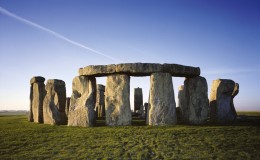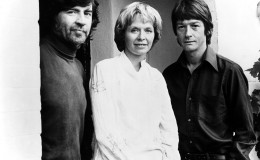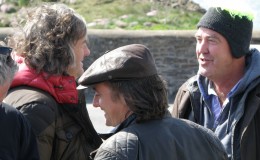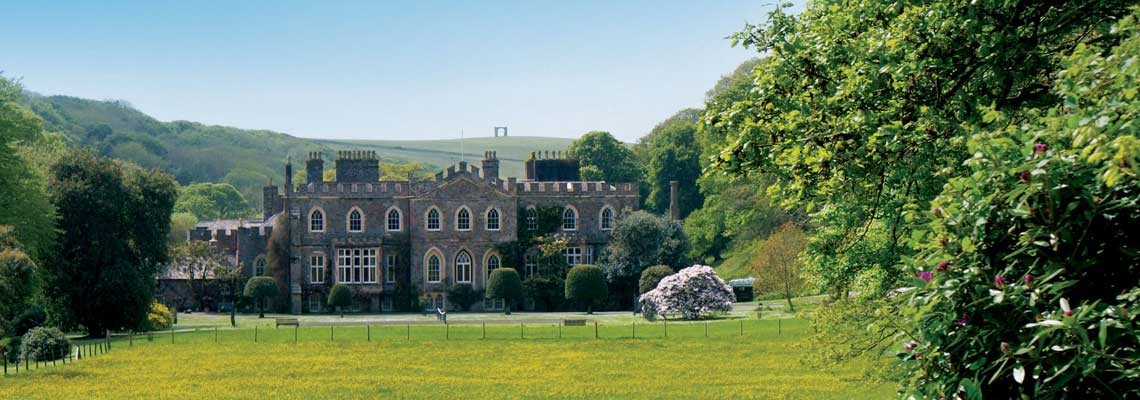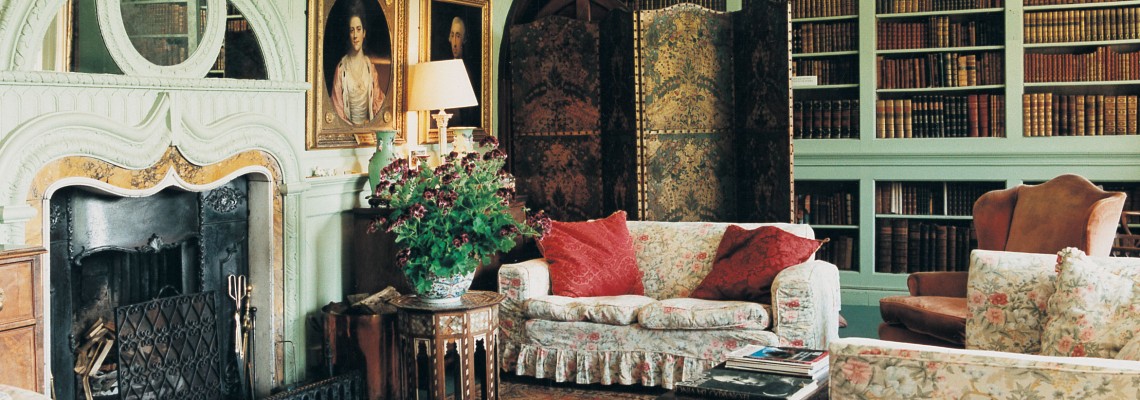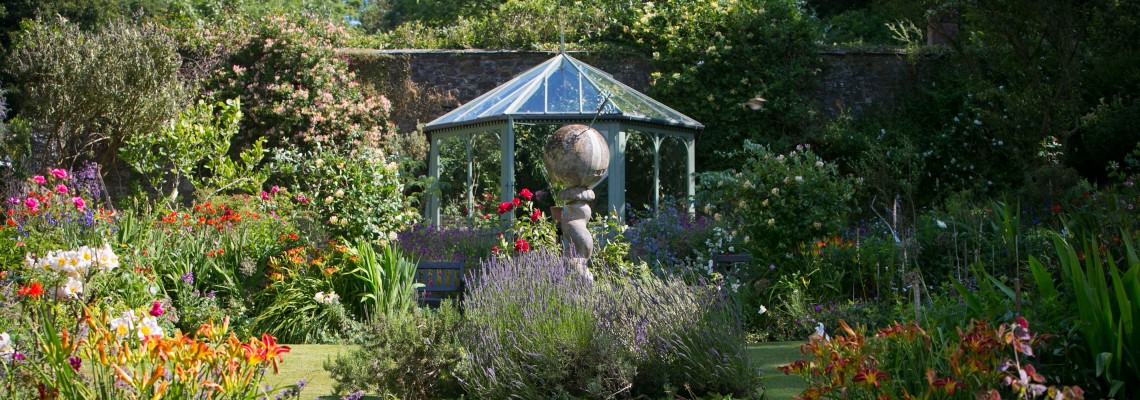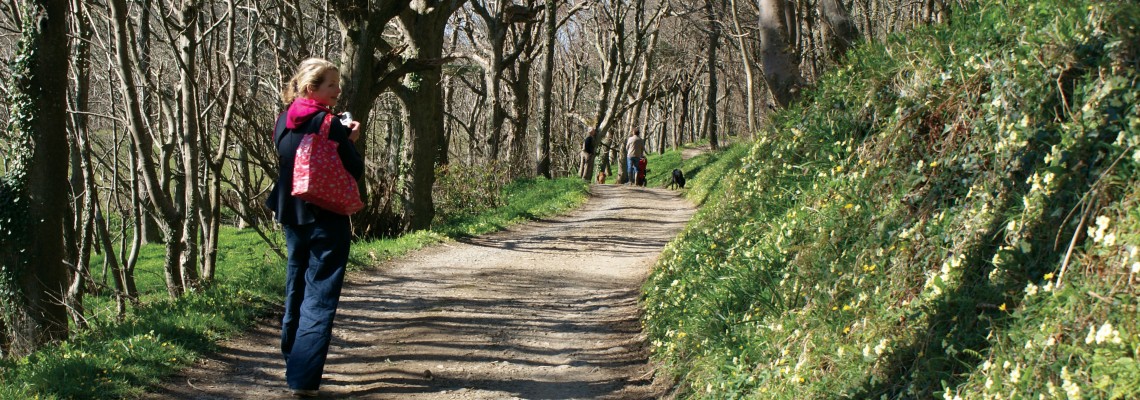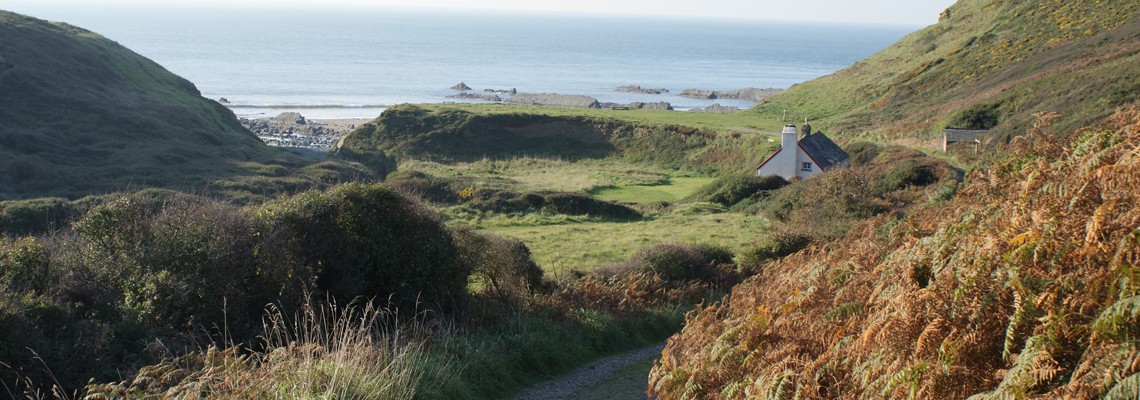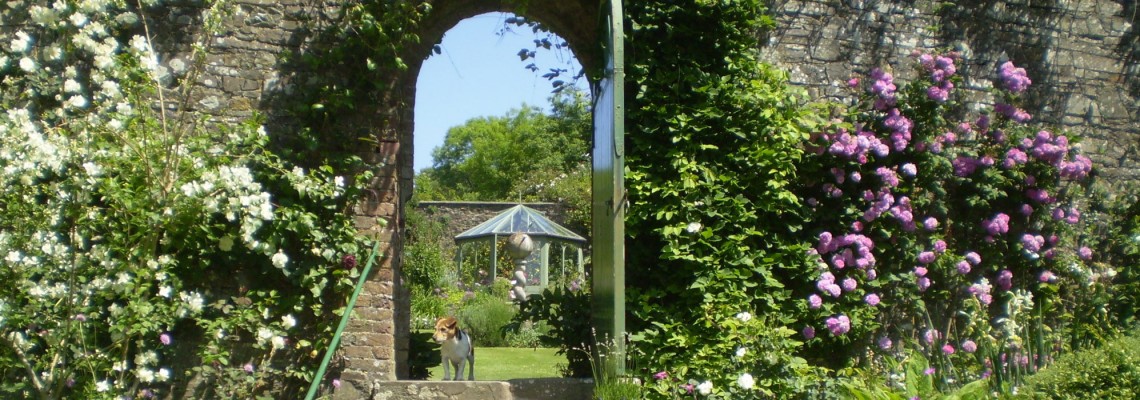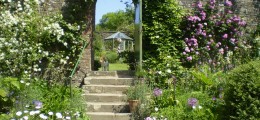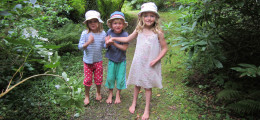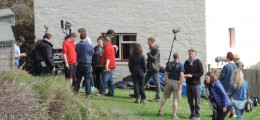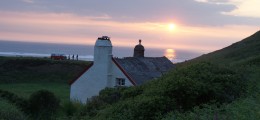Our current exhibitions 2024
We still have two new small exhibits on display: ‘Falconry by The Hon. Gerald Lascelles (1849 – 1928)’ by Brian Bird and ‘A Victorian Honeymoon’ – a fascinating display on Lewis and Marion Stucley’s trip around Europe in the Victorian era.
The History of the Hartland Abbey Estate
A small display on the history behind this fascinating estate from the 12thC when Hartland Abbey was an Augustinian monastery up until the present day when it is a much loved family home regularly open to visitors.
Filming on the Hartland Abbey Estate since 1934
This is a fascinating display into the many productions filmed on the estate over the past 82 years. Many images of well known actors, actresses and household names from the entertainment industry including Michael Caine, Billy Connolly, Leonard Rossiter, Fulton Mackay, Alan Bates, Susannah York, John Hurt, Dan Stevens, Jeremy Clarkson, James May and Richard Hammond and recently, Tom Hiddleston, who have filmed on the estate. For 2018, new images of Lily James, Jessica Brown-Finlay, Michiel Huisman, Matthew Goode, Tom Courtenay and Penelope Wilton filming ‘Guernsey’ at Hartland will be on show. Due to be released this spring, scenes were filmed near the Abbey and on the cliffs near Hartland Quay. ‘Guernsey’ is the film of the book ‘The Guernsey Literary and Potato Peel Society’ written by Mary Anne Schaffer and Annie Barrows. For 2023 we will hopefully be showing two productions recently shot on the Hartland Abbey Estate and inside Hartland Abbey: BBC’s ‘Gold Digger’ (2019) starring Ben Barnes and Julia Ormond and Daphne du Maurier’s ‘Rebecca’, partly shot at Hartland Quay starring Lily James, Kristen Scott-Thomas and Armi Hammer. Enid Blyton’s ‘Malory Towers ‘ for CBBC and IPlayer was shot in and around Hartland Abbey. Series 1 is on display and we are hoping to display ‘Behind the Scenes of Series 2, 3, 4 and 5 ‘ very soon – as soon as we can find somewhere to put it! Along with the locations, there are images of, and the stories behind the filming at Hartland Abbey over the many years.
Our existing ‘William Stukeley – Saviour of Stonehenge’ exhibition is now a permament fixture!
A fascinating insight into an eccentric 18th century ancestor best known for saving Stonehenge and Avebury from the ‘Stonekillers’, the destroyers of these ancient Neolithic monuments which are today such an important part of our national heritage.
On show are many aspects of his life including a facsimile of his memoirs of Sir Isaac Newton, his works and pictures of Stonehenge and Avebury and many of his drawings from his Itinerarium Curiosum of the 1720s, an extraordinary record of 18thC Britain.
The inspiration for this display came from the portrait hanging in The Little Dining Room, by Sir Godfrey Kneller. For many years Dr.William Stukeley has looked down on our family from the panelling above the fireplace. Curiosity made us to want to get to know this distant ancestor better. After much research and help from many people we feel we know so much more of this extraordinary character.
Our relationship to William Stukeley can be traced back to about 1440 when Sir Hugh Stukeley from Huntingdon married Catherin Afton, an early ancestor of the present family, who lived in the house at Affeton which the Stucley family inhabit today.
Artist, prolific writer and poet, architect, archaeologist, antiquarian, scientist, physician, clergyman, druid, musician, numismatist, traveller, freemason, genealogist, gardener and animal lover, William Stukeley was all of these. He lived during the era of the Age of Enlightenment and the Grand Tours, a great time of learning and discovery. He himself believed it unnecessary to travel abroad to study antiquities when there was so much to discover in his native country. When asked why he did not travel to Europe, Stukeley replied ‘I answered that I loved my own country and there was curiosity and antiquity enough at home to entertain any genius’.
Stukeley was a great friend of Isaac Newton and was with Newton when he discovered gravity through the falling apple. It was Stukeley who first recounted the tale and wrote the first published memoirs of Newton. We have a facsimile of this in the exhibition.
Born in Holbeach, Lincolnshire in 1687 as the son of a local lawyer, after Cambridge University William Stukeley’s career began in medicine but he is best known for his work as an 18thC pioneering field archaeologist, especially at Stonehenge and Avebury. Today we owe him a debt of gratitude, not only for his accurate drawings and writings recording these monuments in the early 18thC but for the attention he brought at the time to their ongoing destruction. It is in part thanks to Stukeley that we can enjoy this important part of our national heritage today. His books ‘Stonehenge A Temple Restor’d To The British Druids’ and ‘Abury A Temple To The British Druids’ were not published until twenty years after he had visited in the early 1720s, by which time he had become obsessed by Druidism. Had they been published at the time they would almost certainly have been a more factual and less fanciful interpretation of the great monuments in the same manner as his great travel journals from 1710, the ‘Itinerarium Curiosum’. Excerpts and drawings from these works are on display, along with interpretation boards covering the most important aspects of his life, a BBC audio recording of ‘Digging for Britain’ and much else.
Before the Roman invasion, Britain was a wild, uncivilised place without documents or letters. But now “our knowledge of prehistoric Britain has been remarkably increased – upon the whole I cannot think of any branch of our Antiquities has received greater improvement than this …we may expect a still much better account, from a very learned and celebrated pen…Dr. Stukeley’. (Dr Wise, Fellow of Trinity College, Oxford in 1738 in his ‘Letter to Dr Mead’).
After Stukeleys death in 1765 it was not until the 19thC that archaeologists took up from where he had finished his work. Not until the 20thC was the soundness of his archaeological work fully appreciated. This display attempts to illustrate the many aspects of the life of this great 18thC character.
We are extremely grateful for the part funding we have received from Leader4 and North Devon Coast AONB SDF without which we would not have been able to stage the display.
|
|
Richard Butler, Chairman of the Sustainable Development Fund (SDF), said, “We are delighted to support this project through our SDF grant funded by Defra. This Exhibition illustrates a fascinating part of Hartland’s heritage and provides an extra layer of interest to enjoy for visitors to Hartland Abbey. The SDF supports community projects which bring environmental, social or economic benefit to the North Devon Coast AONB”.
|
|
|
|
See downloads page for flyer
